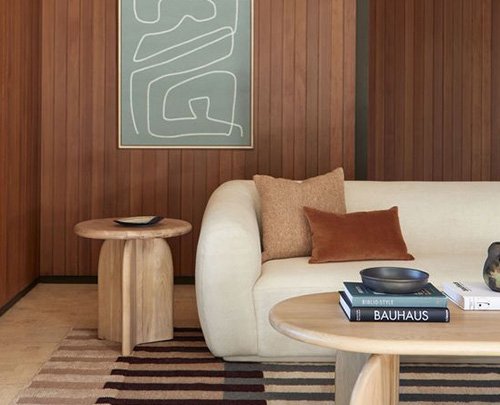
Shaping Tomorrow: The Enduring Influence of Women in Interior Design and Architecture
By Ishika Paruthi | Interior Design, Lifestyle
In the captivating narrative of design and architecture, women have evolved from overlooked contributors to prominent visionaries, actively shaping our built environment. Their impact extends far beyond the superficial, weaving into the fabric of innovation, functionality, and societal consciousness. This exhaustive exploration aims to illuminate the profound and transformative contributions of women in these fields, celebrating their creativity, resilience, and unique ability to craft environments that not only please the eye but resonate deeply with the human spirit.

As we venture on this journey, it is crucial to acknowledge the historical tapestry where women, despite formidable odds, have not only asserted their presence but have also redefined the very essence of design. The 20th and 21st centuries have served as crucibles for visionary women who, with unwavering determination, have challenged the status quo and left an indelible mark on the architectural and design landscapes.

The narrative of women’s involvement in design and architecture is a testament to their resilience, overcoming historical oversights and defying societal norms. The 20th and 21st centuries mark a seismic shift where pioneering women garnered recognition for their ingenuity and redefined the very essence of design. Zaha Hadid, an Iraqi-British architect, stands as a luminary in this regard. Her avant-garde designs, from the undulating Heydar Aliyev Center in Baku to the iconic Guangzhou Opera House, testify to her groundbreaking vision and the limitless possibilities she brought to the field.
Beyond the Iconic: Women in Interior Design:
While architectural prowess often takes the spotlight, interior design emerges as a fertile ground for women to exert their influence. Elsie de Wolfe, widely regarded as the first professional interior designer, blazed a trail during the early 20th century. Her innovative use of colour and emphasis on comfort transformed interiors, setting the stage for future generations of female designers.

In the contemporary landscape, Kelly Wearstler serves as a paragon of innovation, consistently redefining luxury and opulence. Her eclectic designs, showcased in projects like the Viceroy Hotels, seamlessly blend modernism with a touch of whimsy, creating spaces that transcend the ordinary. Wearstler’s influence extends beyond interiors to product design, where collaborations with renowned brands bring her distinctive aesthetic to a broader audience, solidifying her impact on the design world.

Sustainability and Social Impact:
The role of women in interior design and architecture transcends superficial aesthetics, encompassing a steadfast commitment to sustainability and social responsibility. Patricia Urquiola, a Spanish architect and designer, positions herself at the forefront of this movement. Her sustainable designs, exemplified in projects like eco-friendly hotels for the Italian brand Il Sereno, reflect a dedication to minimizing environmental impact without compromising on style or functionality.

In the realm of social impact, Indian architect Anupama Kundoo has emerged as a standout figure. Renowned for her work on affordable and sustainable housing, Kundoo seamlessly blends traditional craftsmanship with modern technology to address pressing housing challenges in India. Her “Wall House” experiment, focusing on sustainable, low-cost construction, serves as a beacon for the transformative power of design in addressing societal needs.

Breaking Barriers: Women-led Firms and Collaborations:
The past decade has witnessed a seismic shift in the design landscape, marked by a surge in women-led design firms challenging the traditional, male-dominated paradigm. The success of firms like Gensler, led by the visionary Diane Hoskins, not only exemplifies the potential for diversity in design leadership but also underscores the transformative impact of women at the helm.

Collaborations between women designers further amplify the resonant voice of female influence in the design world. The partnership between architect Jeanne Gang and interior designer Jennifer Carpenter, for instance, showcases the synergies that emerge when diverse perspectives converge. Together, they navigate the complexities of design, blending architectural and interior elements seamlessly to create harmonious, holistic spaces.
Now it becomes evident that the role of women in interior design and architecture is not a mere historical footnote but an ever-evolving saga of creativity, innovation, and a profound commitment to positive change. From historical trailblazers who defied conventions to contemporary visionaries pushing the boundaries of design, women continue to shape the way we inhabit and interact with our built environment.

As the design world increasingly embraces diversity, it is crucial to recognise and celebrate the transformative impact of women in these fields. Their influence extends beyond the mere creation of spaces; it is a vibrant force propelling us toward a future where design is limitless, inclusive, and truly reflective of the diverse human experience. The legacy of these women is not confined to the structures they’ve erected but extends into the very fabric of our society, inspiring generations to come to envision and craft a world that is as diverse and dynamic as the women who helped shape it.

